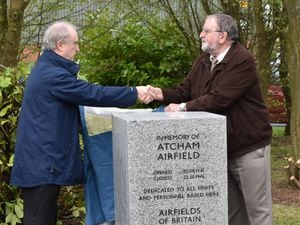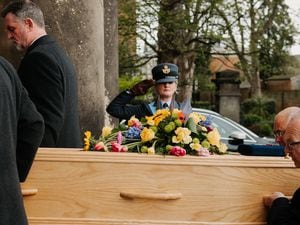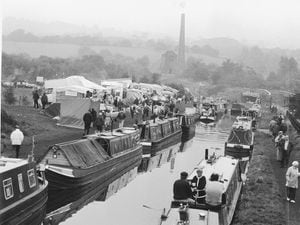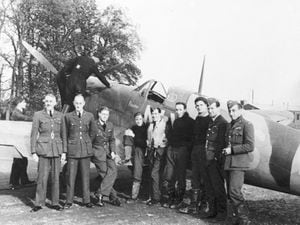Military invasion which left estate in a state
Idle, undisciplined, and quite useless.
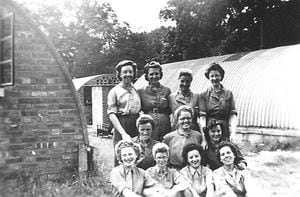
But maybe Ethel Morris, the owner of Aqualate Hall and estate near Newport, could be forgiven for having that jaundiced view of the ATS - that is, the Auxiliary Territorial Service, the women's branch of the army.
Because during the war her estate underwent an ATS invasion which saw hundreds of women arrive and the grounds transformed into a military transport site housing thousands of vehicles.
The story has been researched by Newport local historian Malcolm Miles who has also turned up some rare pictures from those days.
Malcolm says Ethel Morris, the eldest daughter of Sir Robert Boughey, who succeeded to the hall and estate when the male line died out, had accepted the war, the evacuees carving their names on her gateposts, the army exercises with hundreds of men getting lost in the park in the fog, and Dr Barnardo's children and staff being evacuated to the hall, which she rather enjoyed.
"But a message from her solicitor, R. P. Liddle of Newport, in July 1942 was rather different," he said.
"He rang up to say that the War Office had requisitioned the whole of the park for a motor transport park for 1,000 or more vehicles and for repair shops and huts for 300 men, what was known as a Vehicle Reserve Depot.
"In the meantime they took over the stables for 200 men to erect huts. They hinted they may also take over the house and put in the ATS.
"The stables and the coach house were cleared and the fire engine removed, and service roads were put in, leaving less space for the deer, who escaped, losing over 30 animals.
"In November 1942 there were 1,500 lorries and a 'terrible mess' and civilians were using the NAAFI. She consoled herself with the thought that 'Hitler would be worse'.
"By March 1943 there were estimated to be 5,000 vehicles of every imaginable variety parked in lines and squares looking like a large town served by concrete and tarmac roads.
"Officers and ATS played lawn tennis for which they were allowed petrol for the Atco mower, though there was none for the estate.
"For 18 months the house had supplied the army with electricity and water from the house oil engine, all for nothing.
"September 1943 saw more huts erected for an extra 50 ATS who joined the 100 already there. They were also billeted at Wilbrighton Hall and Woodcote Hall."
He said the ATS was set up in 1938 and from September 1941 unmarried women between the ages of 20 and 40 could be conscripted, or more delicately “designated,” into the familiar categories of cook, driver, clerks, stores, then telephonists and radar. As the war continued they did heavier duties on searchlight batteries, barrage balloons, anti-aircraft batteries and, as in the case of Aqualate, vehicle repair and maintenance.
"However Mrs Morris described them as idle and undisciplined and quite useless.
"She saw them as rushing everywhere in jeeps and small lorries at 60mph raising clouds of dust where once there had been green parkland.
"By June 1944 there were these hundreds of young women isolated in the countryside but surrounded by thousands of American and Canadian soldiers and also Polish, the niece of Ethel Morris actually marrying a Polish officer whose family now own Aqualate. It must have been an interesting time to be young in Newport.
"It was a long time before normality returned. Barnardo's left the hall but the army had thousands of vehicles to clear away, mainly to local previous airfield sites. It was July 1948 before the army and the ATS moved out, leaving hundreds of old battered vehicles and rubbish from the stables, much of which was moved by German prisoners of war.
"The park was cut up, with pools of water and little grass. It would take time to return to agriculture.
"Now came a post-war problem - housing, or lack of it. The huts may have been Nissen huts, corrugated iron on concrete bases, without power, water or sewerage, but they were better than nothing for the homeless, young married men home from the war.
"By 1952 they had moved in with the local authorities, in this case Stafford Rural District Council and Newport Urban District Council, with no money or inclination to improve them as they were so remote from work or amenities, despite being ordered to do so by Aneurin Bevan.
"It was estimated in 1954 that 60 families were living in these huts, including Jaeny Graaf from Holland whose father was an engineer at Audco.
"Gradually the families were moved to spacious council housing at Victoria Park and Broadway, Newport.
"The district council gradually demolished the huts, but the bases can still be seen from the Stafford Road on winter days."


